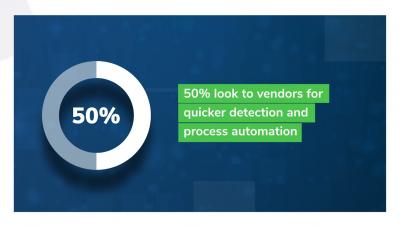Security | Threat Detection | Cyberattacks | DevSecOps | Compliance
Incident Response
Incident Response Plan vs. Disaster Recovery Plan
When developing business continuity plans, businesses should understand that they actually need two documents: an incident response plan and a disaster recovery plan. Having an incident response plan means your organization is prepared for possible information security incidents such as a data breach, a system outage, or a security breach.
Cyber Security Incident Response Plan - How to Create One?
Cyberattack is one of the common threats that modern businesses are facing today. Despite the growing threat landscape of cybersecurity attacks, many small and medium companies that experience data breaches and threats do not have adequate preparations. This includes prevention measures before the attack and incident response plans during/after the attack.
SANS Report Reveals Significant Growth in Automation: Maximize Your Investments
The SANS 2021 Automation and Integration Survey is now available for download, focusing on the question: First we walked, now we run – but should we? Let’s face it, we’ve talked about security automation for years. We’ve grappled with what, when and how to automate. We’ve debated the human vs machine topic.
Incident Response Automation Challenges - State of Incident Response 2021
The Role of Managed Detection and Response - State of Incident Response 2021
Flexible Incident Response playbooks for any situation
Splunk Welcomes the Formation of the Joint Cyber Defense Collaborative
On August 5, 2021, the Cybersecurity and Infrastructure Security Agency (CISA) announced the standup of the Joint Cyber Defense Collaborative (JCDC) , a new agency effort to lead the development of cyber defense operations plans.
Anatomy of a Supply Chain Attack: How to Accelerate Incident Response and Threat Hunting
In recent months, we’ve seen a sharp rise in software supply chain attacks that infect legitimate applications to distribute malware to users. SolarWinds, Codecov and Kesaya have all been victims of such attacks that went on to impact thousands of downstream businesses around the globe. Within minutes of these high-profile attacks making headline news, CEOs often ask: “Should we be concerned? How is it impacting us? What can we do to mitigate risk?” .











